'I have a WW2 German officers toilet in my garage'
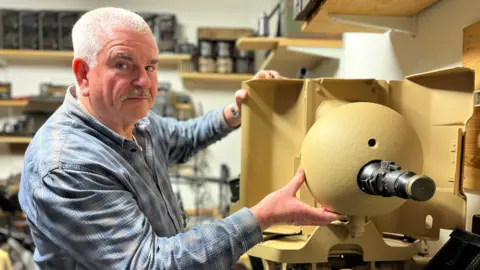 BBC
BBCWhen the Germans surrendered in May 1945, ending World War Two in Europe, most of the soldiers stationed in Jersey were shipped away to prison camps in Britain.
They left behind countless objects as a reminder of their five years of occupation.
Guns, uniforms, helmets and ammunition were all piled up in bunkers to be collected by the authorities.
Many artefacts are considered valuable collectors' items, alongside other more unusual items whose value may be very personal to the person collecting them.
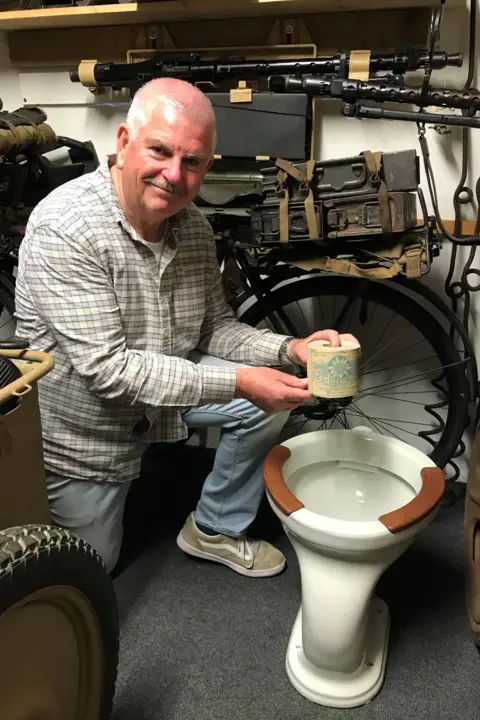
Graeme Delanoe is a collector of Occupation artefacts - concealed behind two heavy reinforced doors at his Jersey home is a garage full of German military gear and Allied equipment.
A machine gun in an armoured turret has been restored to its original condition and old ammunition boxes line the walls.
Due to the modifications, the gun no longer fires but Mr Delanoe said it was "important people should be able to look at something like this".
"It's history," he said. "[I was] very lucky to grow up in Jersey, my father, who was a boy over here, talked about the Occupation.
"He used to do a lot of photographic work and paid me in German gear, so I was very happy as a young lad and it's very nice to own some of these bits and pieces."
On a door, he has mounted parts of a torpedo that was fired by PT-509, an American boat that sank after a fight with the German navy off Noirmont onthe south-west coast of Jersey in 1944.
He is also the owner of landing gear from a Thunderbolt fighter, and the canopy from a P-51b Mustang, flown by 2nd Lt Joseph Krebs, who was shot down in February 1944.
Perhaps the most unusual object in Mr Delanoe's collection sits in a corner of its own.
In stark contrast to the warlike accoutrements all around, a white porcelain toilet squats beneath a rack of ammunition boxes, its wooden seat still intact.
"This one was recovered from the original Strawberry Farm bunker, which was used as one of the Kommandant (command) bunkers during the war," he said.
In response to whether the commander of the Jersey garrison could have used this unique piece of occupation memorabilia, Mr Delanoe said: "He could well have done, plotting all sorts!"
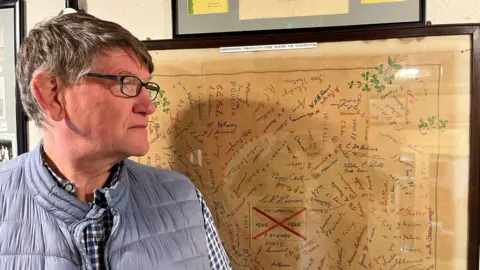
Damien Horn is a Jersey man who has had a passion for Occupation memorabilia since he was a child.
In his lifetime he amassed such a collection of photos, weapons and other equipment that he opened his own museum in a bunker at the end of the Five Mile Road.
Among the guns, signs and flags there are some very personal items including a tablecloth covered with embroidered signatures.
"It was something my aunty gave me," Mr Horn said.
"She got her family and friends to put their signatures on the tablecloth and in the evening time she would then embroider over the names so they were saved for posterity."
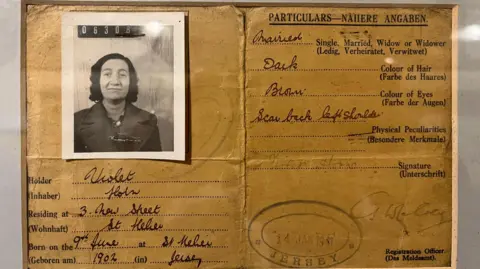
He also has his grandmother's identity card, issued by the Germans, which had to be carried at all times.
"It's one of those items that isn't monetarily valuable, but its something I'd never part with, it really is important to me," he explained.
While the ID card may be a simple creation of cardboard with a photo attached, some of the other items in his collection are far more complex.
One of his two Enigma machines is also on display in the museum.
The piece of equipment, which looks similar to a typewriter, was used to encode top secret messages to be sent to headquarters in Germany.
Code breakers at Bletchley Park, led by Alan Turing, managed to break the codes used by Enigma after an early model was captured by HMS Bulldog in 1941.
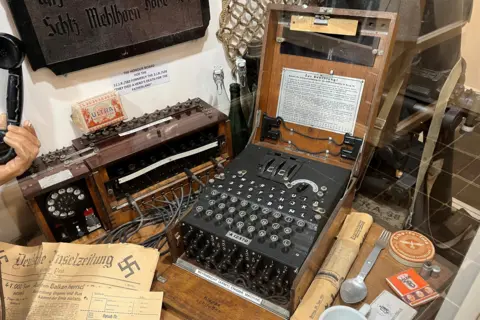
Follow BBC Jersey on X and Facebook. Send your story ideas to [email protected].
